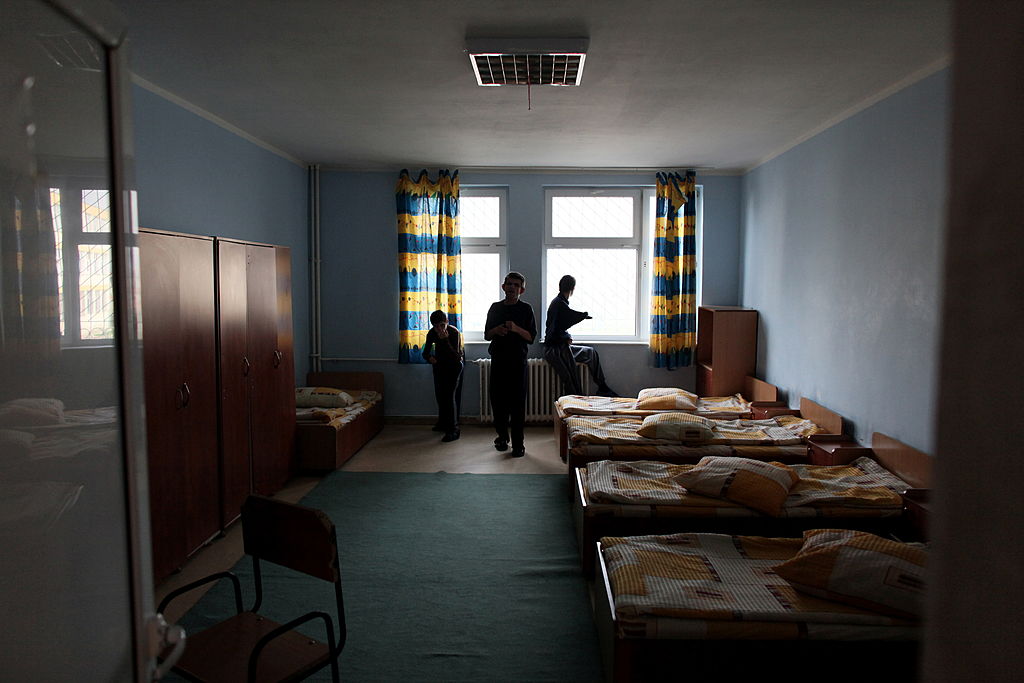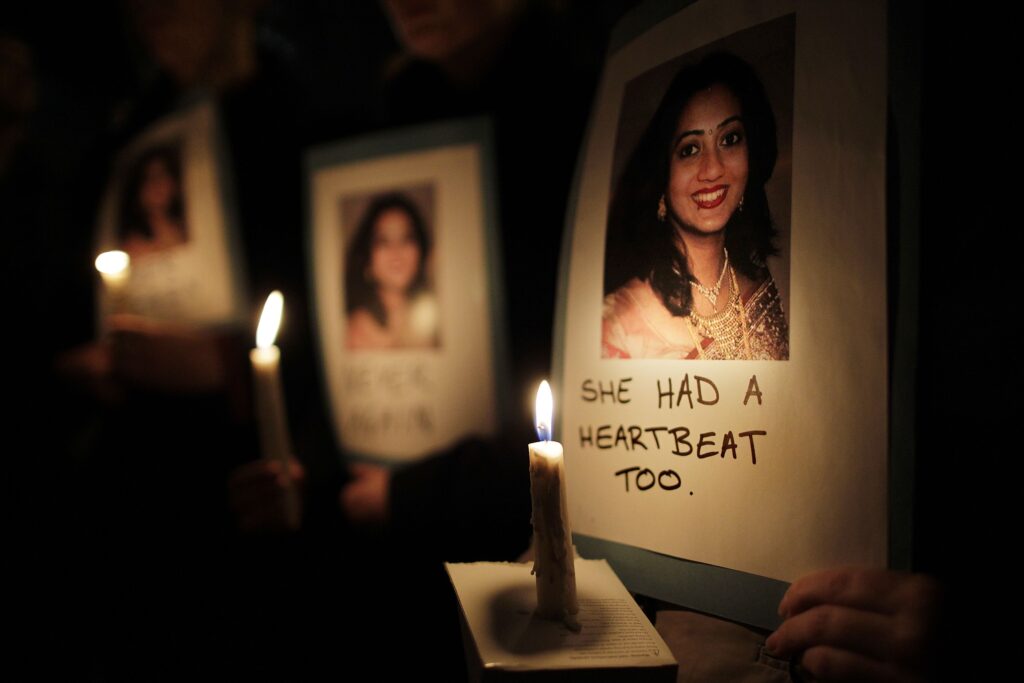From Romania to Ireland to the U.S., abortion bans have a bloody history.

Since the Supreme Court voted in support of Texas’s infamous Senate Bill 8, 31 more states have introduced anti-abortion legislation—and two of those 31 bans are currently in effect. Three more have been signed into law but have yet to take effect.
After the Senate voted no on the Women’s Health Protection Act (WHPA), I decided to conduct in-depth research on two separate but similar moments in recent global history.
In October 1966, Romanian dictator Nicolae Ceaușescu outlawed abortion and all forms of birth control. He was deeply concerned with Romania’s declining birth rate. I think of Ceaușescu’s reasoning whenever I see a sudden slew of news articles about our steadily declining birth rates here in the United States. Without Apology by Jenny Brown contains a chapter highlighting her illuminating research on the correlation between declining birthrates and proposed abortion bans:
“From the standpoint of the 99 percent, lower birth rates are a phony crisis, but from the standpoint of the establishment, the problem is real. Their profits, and capitalist economic growth in general, rely on a continually growing workforce replenished with ever larger cohorts of young people to work and consume and pay taxes and serve in the military, and to provide for older workers when they retire, either individually through family ties or collectively through Social Security.”
What happened in Romania after Ceaușescu decided that abortion was illegal unless a woman had already birthed five children? His hardline policies led to the squalor of the infamous Romanian orphanages.
Parents were allowed to leave the children they birthed at the hospital. Leaving their newborns at the hospital didn’t automatically mean that they were renouncing their parental rights. But if the parents decided to leave their child without renouncing their relationship with them, the child was ineligible for adoption.
Though some of the children ineligible for adoption were moved into foster care, a great majority of surrendered children were kept in the hospital until the age of two, then placed in orphanages. By 1990, over 170,000 children—from infants to age 18—had been crammed into 700 facilities.
What happened in Romania after Ceaușescu decided that abortion was illegal unless a woman had already birthed five children? His hardline policies led to the squalor of the infamous Romanian orphanages.
Outside of basic needs like feedings and baths, infants weren’t held or given any other attention. Young children were punished through all manner of physical abuses. Incoming caretakers who were reluctant to hit children would be mocked and goaded by other more hardened co-workers until the moment they’d decide to trade their morals for the demands of their new job.
Both a lack of medical knowledge and a lack of resources led to rampant transmission of HIV and AIDS, as filthy needles were used far past their original points of sterility. Over half of the children in the orphanages became infected with HIV or AIDs during their stay.
Ireland’s Magdalene Laundries
In 1983 Ireland, 67 percent of the population voted to pass the Eighth Amendment, which strictly outlawed all abortion, even though elective abortions had been banned since 1861.
Under the repressive culture supported by these laws, young unmarried women were liable to be sent to a Magdalene Laundry. Many survivors attest that their living conditions were that of a prison. Although the churches and the courts were known for forcing young women into the laundries, parents could decide to hand their daughters to a laundry for a range of offenses from “being so bold” to having a child out of wedlock.

A survivor of a Magdalene laundry recounts the harsh treatment that inspired her to run away:
“I worked from eight in the morning until six in the evening every day except Sunday. The work was awful. We had a huge spin dryer and we had to load all the wet sheets and towels in. We had all the state contracts from the hospitals and the army. I had to wear rubber boots when I was loading the machines. We had to carry loads of tangled, soaked sheets and they were so heavy.”
—As told by Elizabeth Coppin to Norma Costello for Al Jazeera
From 1922 to 1996, around 35,000 women were committed to a laundry. Over 870 never made it out; this death toll includes a range of ages 15 through 95. A high number of babies died without the chance to grow beyond infancy. 796 children aged 35 weeks to 3 years old died at one facility alone in County Galway. It’s widely believed that several unmarked mass graves are yet to be discovered, meaning that the heights of the death counts are still unknown.
The U.S.’s Own Dark History
The horrific human rights violations exhibited inside the Romanian orphanages and the Magdalene laundries resulted from policies designed to control people of reproductive age by limiting their bodily autonomy. Both Romania and Ireland have since legalized abortion, as conservative lawmakers and justices here in the United States continue to chip away at rights established by Roe v. Wade in 1973.
Some Americans will be quick to say that facilities like the Romanian orphanages and the Magdalene Laundries couldn’t possibly take root here in the United States. I would counter that recent events show we are, in fact, capable of comparable atrocities.
In the selection below, a woman named Pamela describes the experience of living in a Catholic-run home for unwed mothers in 1966, when she was only seventeen years old:
“The walls were very thin and at night you fell asleep to the sounds of girls crying. One night, the girl in the next cubicle began to bleed heavily. She was delivering the placenta before the baby. She died holding our hands waiting for the ambulance.
Doctors rotated monthly for delivery. I got the worst. He literally butchered me doing an episiotomy. My general physician told me he had never seen an incision that bad. Years later, in an effort to fix it, I had surgery and almost bled to death.”
—Courtesy of grrnow.org. Grandmothers For Reproductive Rights is an organization based in Bath, Maine.
And let’s not forget how families were torn apart at the border just a few years ago. In May 2019, the border processing center in El Paso held 900 migrants in a facility designed for a maximum capacity of 125. Up to 155 people were packed into cells intended for only 35. For days and weeks on end, the people held in those cells were stuck in standing-room-only positions.
Over 5,000 children were separated from their caretakers before a federal judge ordered the Trump administration to reunite the families, and the administration was able to remedy 2,100 of the separations before Trump left office.
One year after Biden established a task force focused on reunification efforts, the White House reports that 120 families have been reunited, and 400 more are currently going through the process. There are many cases of a child at the border whose caregiver was sent back to Mexico—and that caregiver may not have access to either a landline or cell phone. Some will have to wait months or years longer before they can see their families again.
If this is how we’ve treated fellow human beings in recent years, how bad will things be for people of childbearing age once the Supreme Court of today decides that we no longer have full rights to our own bodies?
Sign and share Ms.’s relaunched “We Have Had Abortions” petition—whether you yourself have had an abortion, or simply stand in solidarity with those who have—to let the Supreme Court, Congress and the White House know: We will not give up the right to safe, legal, accessible abortion.
Read more:





